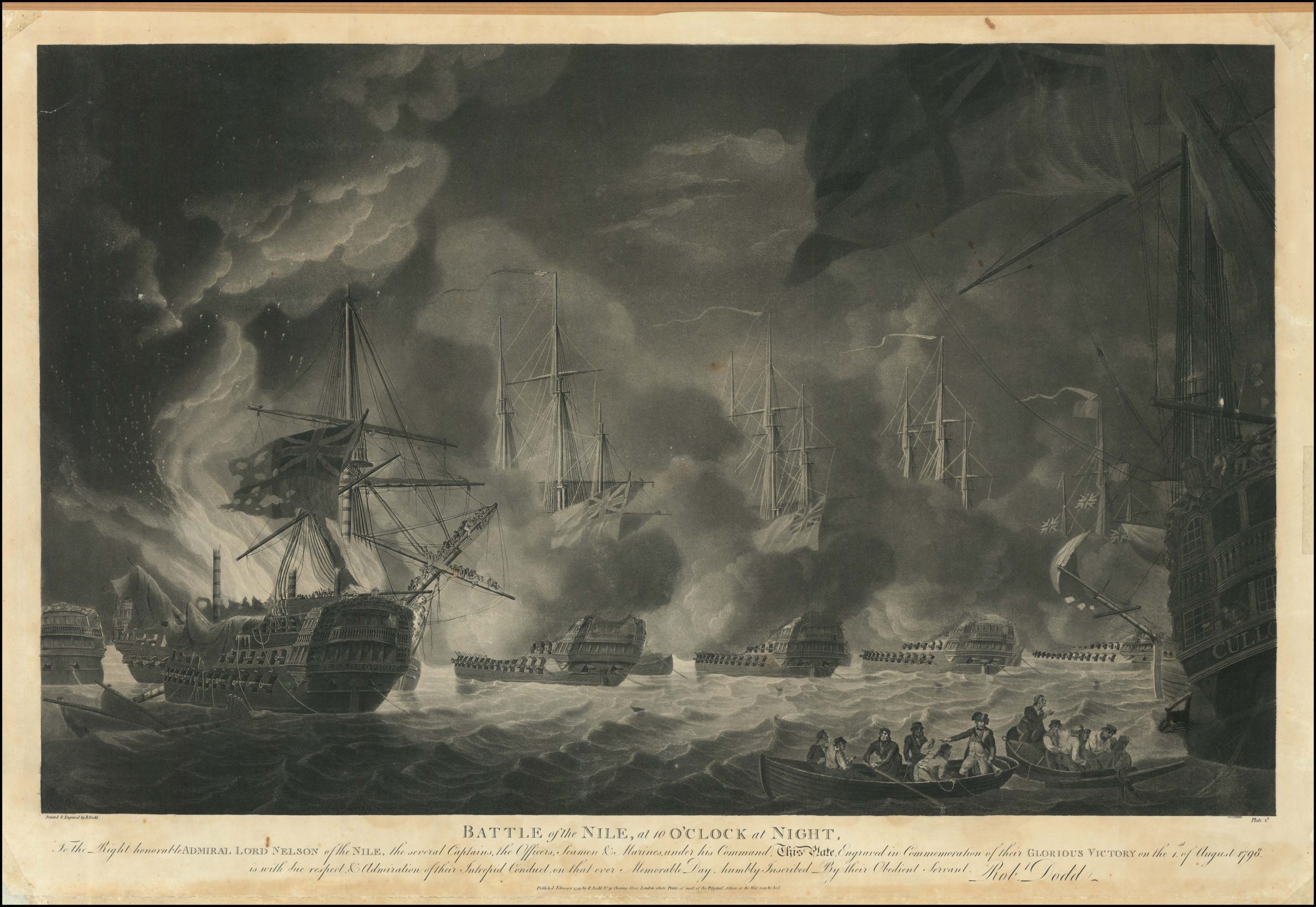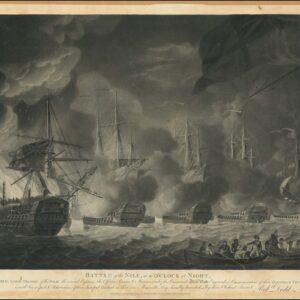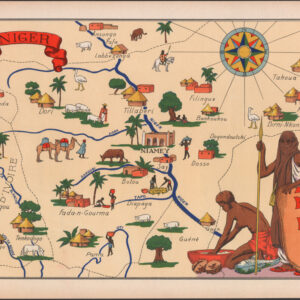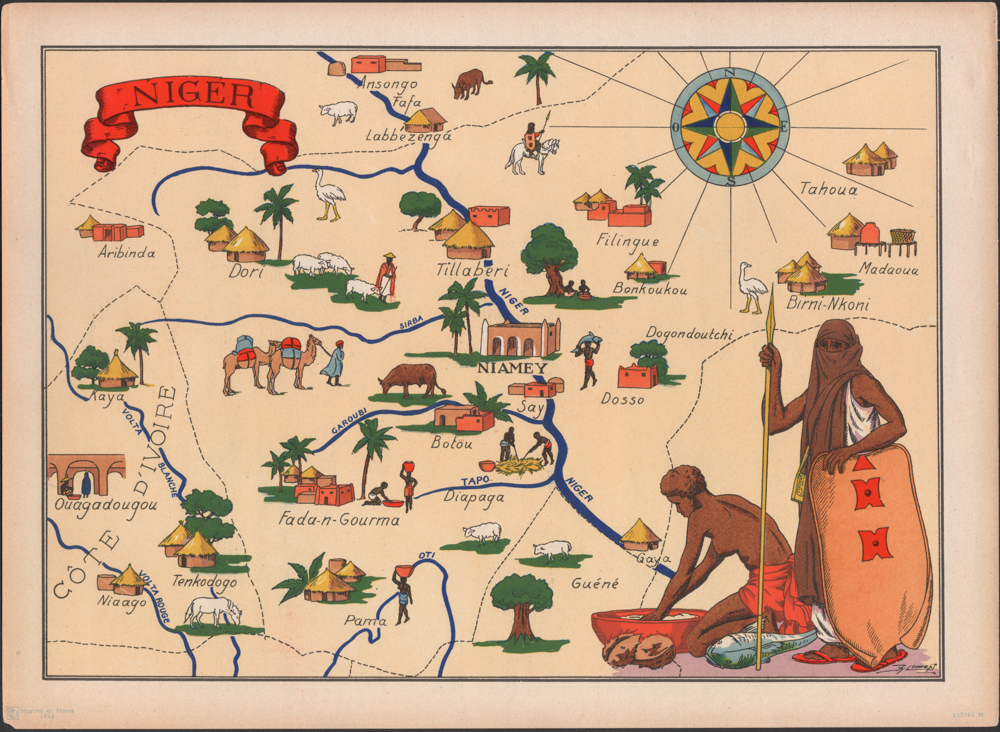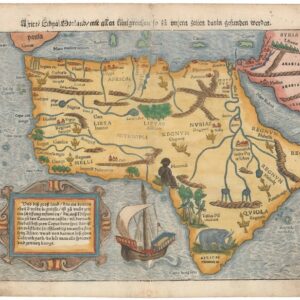One of the earliest printed views of Cairo, with no institutional parallels.
LA GRAN CITTÀ DEL CAIRO.
$1,900
1 in stock
Description
This rare bird’s-eye view of 16th-century Cairo was engraved by the Lafreri cartographer Ferdinando Bertelli for his 1568 Cosmografia Universale. Examples of the print are also known to have been preserved in some composite atlases of the era. The view is not to be confused with Donato Bertelli’s view from the following year, which used this as its template. While both views are rare, Donato Bertelli’s view occasionally surfaces on the market. Ferdinando’s view has few, if any, historical sales recorded.
When Bertelli first issued his view in 1568, Cairo was the thriving capital of Ottoman Egypt and home to about half a million inhabitants. Its urban landscape was a magnificent blend of Fatimid, Ayyubid, Mamluk, and Ottoman architecture that European intellectuals and merchants could only admire from a distance. Bertelli’s view mirrored European knowledge of Cairo at the time, identifying the ancient core and successive phases of urban growth, including the eastern suburbs. And he shows how an impressive network of Nile-fed aqueducts and grand thoroughfares tied all of it together.
A broad title cartouche in Italian crowns the view, and beneath it is a six-column numerical key (1–54) identifying the city’s gates, mosques, markets, and other public buildings. The perspective was deliberately rotated so that north is to the viewer’s left. By applying this orientation, the Nile sweeps diagonally from the upper right toward the lower left of the composition, underscoring the river’s central role in Cairo’s commerce and daily life. The engraving meticulously traces both Old Cairo, clustered around the ruined Babylon fortress, and the Azbakiya quarter on the eastern bank of the Nile. The delicate etching is characteristic of Lafreri-school views and shows the city’s main thoroughfares, bridges, and aqueduct in impeccable detail.
When Bertelli compiled his view, some information on Cairo was available to a scholastic elite, but there were only a few visuals to aid the European understanding of the city. Bertelli’s Cosmografia provided one of the first accurate views, and he designed it specifically to complement European accounts of the city’s sophisticated water-management systems. This does not mean that Bertelli did not leave for other essential features. Along the west bank of the Nile, for example, we find the iconic Giza plateau with its pyramids (18) and an early and rather humorous depiction of the Sphinx (15).
Within the walled city, important historical structures include the ancient core and Roman fortress of Babylon (25), the theologically decisive Mosque of al-Azhar, the great citadel commissioned by Sultan Salāh ad-Dīn al-Ayyūbī (a.k.a. Saladin), and the more recent (constructed in the 1470s) but equally impressive madrasa of the Mamluk Sultan Qaytbay. The Fatimid gates of the old city are also listed (37 & 46). Bertelli rendered all of these institutions in Cairo in pictorial elevation, keying each site to the legend for easy and exact identification. The 54-entry index is unusually comprehensive for its time, providing a precise cross-reference to the view’s many pictorial details. This reflects both the meticulousness of the Lafreri School in general and the late Renaissance fashions prevalent among Venetian engravers.
Census
The Cairo view first appeared in Ferdinando Bertelli’s Cosmografia Universale (1568). Examples also survived in composite Lafreri atlases, testifying to its popularity. No intact examples of the Cosmografia Universale are known to have survived, although various institutional libraries hold one or more maps from the work. Among institutional holdings, the only example of Ferdinando Bertelli’s Cairo view is a reproduction in the Bayerische Staatsbibliothek (OCLC 1164177530). Donato Bertelli’s emulation is considerably more common, with many institutional holdings and some examples on the open market.
Cartographer(s):
The Bertelli family represents the largest group of publishers, engravers, cartographers, and merchants of 16th century prints. The most productive was Ferrando Bertelli, active between 1560 and 1570, but maps of the last quarter of the century are known with the signatures of Andrea, Donato, Lucca, Nicolò, and Pietro. The latter was mainly active in Padua, where he led a printing and engraving workshop.
Condition Description
Very good.
References
![[With Extensive Contemporary Annotations] Ordnance Survey of the Peninsula of Sinai Made in 1868-9.](https://neatlinemaps.com/wp-content/uploads/2020/05/NL-00842_Thumbnail-300x300.jpg)
![[With Extensive Contemporary Annotations] Ordnance Survey of the Peninsula of Sinai Made in 1868-9.](https://neatlinemaps.com/wp-content/uploads/2020/05/NL-00842-scaled.jpg)
![[With Extensive Contemporary Annotations] Ordnance Survey of the Peninsula of Sinai Made in 1868-9.](https://neatlinemaps.com/wp-content/uploads/2020/05/NL-00842-scaled-300x300.jpg)

